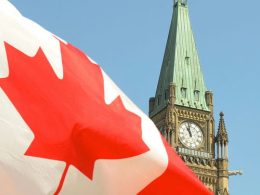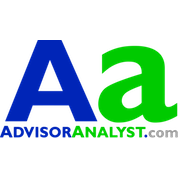by Sonal Desai, Ph.D., Chief Investment Officer, and Team, Franklin Templeton Fixed Income
Watching the press conference after the May Federal Reserve (Fed) policy meeting, I thought Fed Chair Jerome Powell brought to light a revealing contradiction in the current public debate on the economic outlook: Everybody talks about the heightened uncertainty, but many also seem to have made up their mind as to where things are going.
A recurrent theme in the Q&A was along the lines of, “Why are you not cutting rates yet? What are you waiting for? Can’t you see the sharp deterioration in sentiment? Why won’t you act now, before it’s too late?”
And Powell’s answer, repeated over and over again, was something like, “We cannot act pre-emptively, because we do not know what we should be pre-empting.”
It is genuine uncertainty, and there are three layers to it.
The first layer is tariff uncertainty. Trade negotiations are ongoing, and we do not know at what levels tariffs will settle by the end of the process. A first broad agreement has now been reached with the United Kingdom. Since the United States runs a (small) surplus with the United Kingdom, and they still get a 10% tariff, it seems fair to assume that the 10% across the board tariff rate is here to stay. This could give a meaningful contribution to revenue raising. In terms of the economic impact, however, as I have shown in a previous article (On My Mind: T-Day), it would be equivalent to a consumption tax of at most about 2% on all goods and services. In fact, it would probably be much less, as there would be exemptions, and consumption would to some extent substitute away from more highly taxed goods. Its growth impact should therefore be very manageable. Beyond that, we still do not know. We might end up with tariffs close to the “Liberation Day” announcements, and those would have a major disruptive impact. Or we might end up with much lower tariffs, while other countries lower their own tariff and non-tariff barriers. We simply do not know.
The second layer is economic uncertainty. As new tariffs are confirmed and put in place, they will rekindle inflation and have an adverse impact on growth. Which impact will dominate? Again, we do not know. It will depend, among other things, on the structure of the new trade regime: Which goods will be subject to what tariffs? How will other countries respond? Again, at this stage, we do not know.
Therefore, as Powell pointed out, the Fed does not yet know if it should be trying to pre-empt a sharp rebound in inflation or a deep downturn in economic activity.
The third layer is broader policy uncertainty. Treasury Secretary Bessent has recently stressed that the administration’s economic strategy encompasses three “interlocking” elements: tariffs, tax cuts and deregulation. When he says “interlocking,” Bessent does not mean simply that the economic impact will be the sum of the three. He means that the three policy areas are interdependent, each reinforcing and supporting the others toward reaching the administration’s goals of boosting competitiveness, reshoring manufacturing and steering gradually toward a more sustainable fiscal outlook.
Now, the chaotic execution of the tariff component does not quite jive with the idea of a carefully calibrated combination of three interlocking components, but it is a fact that concrete progress on deregulation and tax cuts would have a very important impact on the economic outlook. Here again, legislative work is ongoing, and we still do not know what the final outcome will be.
There is one more thing worth highlighting, even though Powell did not spell it out. Given that a large part of the uncertainty is policy-related, there are no economic models that can help the Fed predict what lies ahead. It is not a simple matter of plugging the right data into an econometric model to get a reasonably reliable projection of growth and inflation.
Consumers and business leaders seem to understand that the uncertainty is genuinely two-sided. As Powell pointed out, the US economy remains very resilient. Consumers keep spending, and job creation maintains a pace sufficient to hold the labor market at full employment. This is not to dismiss the worsening in sentiment indicators which, as Powell acknowledged, has been extremely deep and rapid and needs to be taken seriously. We might yet see a sudden fall in actual activity data. For now, however, the economy remains robust, which means that the government still has time to right the ship.
Consumers Continue Spending Despite Worsening Sentiment
2012–2025

Sources: Redbook Research Inc., University of Michigan, BLS, Macrobond. Analysis by Franklin Templeton Fixed Income Research. As of May 9, 2025.
If we do get a stagflation shock, how will the Fed react? As we heard in the press conference, it will ultimately depend on whether it is employment or inflation that turns out to be the bigger problem, with the larger deviation from the target. In the first instance, however, I think the Fed’s priority will be to lean against the inflation impact of tariffs to make sure it remains transitory and does not feed into second-round effects of broader wage and price increases. Powell indicated as much, and it makes perfect sense, given that we’ve now had above-target inflation for four years and counting. The Fed will not rush to cut rates, in my view. And if we get good news on deregulation and tax cuts, it might not cut rates at all.
Output Gap Remains Positive—Inflation Bigger Concern for Fed
1976–2024

Sources: CBO, BEA, Macrobond. Analysis by Franklin Templeton Fixed Income Research. PCE represents personal consumer expenditures. The output gap is an economic measure of the difference between the actual output of an economy and its potential output. As of May 9, 2025.
On the fiscal side, don’t get your hopes up for any meaningful consolidation. Bessent says the administration is committed to putting fiscal policy on a sustainable path, but the US political system does not seem to be in any hurry to start. I believe the likelihood of significant expenditure reduction in the United States is about the same as that of meaningful labor market reforms in the European Union—nonexistent. Fiscal policy will likely be growth-positive, but at the cost of another year or more of large fiscal deficits—with the obvious implications for borrowing needs and pressure on yields.
We face genuine two-sided uncertainty. Trade negotiations might unravel, pushing us back into major uncertainty and fears of a US and global recession, in turn causing expectations of Fed rate cuts and a resultant plunge in bond yields. But equally, we could see growth lift again, keeping the Fed on hold and pushing bond yields higher, with the complicity of a still large fiscal deficit. On balance, I think the latter remains more likely.
One last point: In its latest forecasts, which incorporate the Liberation Day tariffs, the International Monetary Fund projects a much more negative impact on the US economy than on the rest of the world, and this now seems to be part of the consensus view. But this goes straight against everything that economics tells us. Not only is the United States a large and mostly closed economy, where trade plays a relatively small role. It also runs a very large trade deficit, which means that many other countries crucially rely on the US consumer to fuel their own growth. Remember the saying that when the United States sneezes, the rest of the world catches a cold? That is still true. A trade war scenario would be bad for the United States. But it would be very bad for the rest of the world.
*****
WHAT ARE THE RISKS?
All investments involve risks, including possible loss of principal.
Fixed income securities involve interest rate, credit, inflation and reinvestment risks, and possible loss of principal. As interest rates rise, the value of fixed income securities falls.
WF: 5300508
Copyright © Franklin Templeton Fixed Income
















